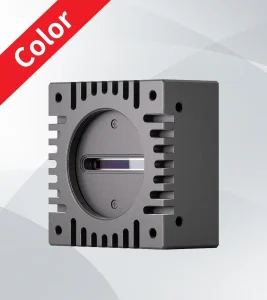The machine vision camera industry has been developing greatly, with a projected market value of nearly $10 billion by 2025. This growth is mostly because of the increased demand of automation in manufacturing, automotive, and healthcare sectors. The technological advancements and developments involve both established giants and innovative newcomers offering unique technologies for visual inspection and analysis.
Key Players:- Basler AG, Germany is a leading German provider of high-performance cameras for diverse applications. Their cameras are available in very high resolution and high speed frames with frames per second going beyond 200. The quality stand certified by ISO 9001 ensures its products to comply with the highest international standards.
Another significant player has been Cognex Corporation, which emphasizes vision systems and the provision of hardware and software solutions. Their VisionPro software is designed such that it may be configured to use machine learning algorithms with up to a 95% increase in accuracy level in inspection. Revenues for the company reached $700 million in 2022, which speaks not only of the company's share in the market but also of how great a force it is in the industry.
Sony Corporation also captured a significant market share within the machine vision camera market and also developed innovative sensors along with image technology. The CMOS sensor is very widely used nowadays in industrial cameras and has been highly valued for being very sensitive to low-light conditions and offering a very high dynamic range. Some of the more recent breakthroughs in the company's product lines include the Pregius series, which provides global shutter functionality that removes distortions of images while capturing the fast-moving objects.

For instance, FLIR Systems is a well-known supplier of thermal imaging technology. This company also offers a very specific product line in the area of machine vision: infrared cameras. These cameras are able to operate well under a variety of conditions. On the other hand, the temperature differences can be identified with an accuracy of ±0.1°C, regardless of the operating condition. For this reason, FLIR's cameras are widely used for industrial applications of predictive maintenance.
Key innovations in this segment have contributed to breakthroughs in machine vision capabilities. For example, deep learning has enabled cameras to do tasks such as defect detection, which require very little human intervention. Machine vision solutions can reduce the environmental operational expenses of manufacturing by nearly 30%, states MarketsandMarkets. Hence, the impact of machine vision on efficiency and productivity is excellent.
The future of machine vision cameras indeed seems bright, considering the constantly evolving horizon for new technologies. According to Dr. John Smith, an industry stalwart, "AI and machine learning in vision systems represent the next frontier in automation." This has made some companies initiate camera development where AI will be applied to advance the object recognition and classification capabilities of their cameras.
All in all, the machine vision camera makers are imperative for the just development of automation technologies in a host of industries. Improving the inspection process involves innovations introduced by these manufacturers toward better efficiency and accuracy in their operations. For further information on top makers in the said field, see the products of machine vision camera manufacturers.
